Current Events :











Tribune News Service
BHIWANI, NOVEMBER 30
After waiting for several hours for a PGIMS, Rohtak, team to collect the body of Sub Pratap Singh Jangra(retd), who had pledged to donate his body , his family members today performed the last rites at Patuwas village.
Sheela Devi and Sunita Devi, two of the six daughters of Pratap Singh Jangra, told media that their father died at Base Military Hospital, New Delhi, yesterday.
“Our father had pledged to donate his body. We contacted the PGIMS authorities several times today but after getting no satisfactorily reply, we had to perform the last rites”, they said. Dr Sudha Chhabra, head, anatomy, Rohtak medical college, however, said that they were not contacted by the deceased’s family members.
Jerusalem, November 27
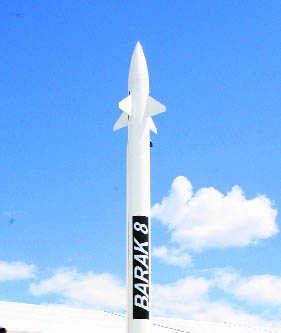
For the first time, the Israeli military has successfully tested from a ship an advanced surface-to-air missile co-developed with India which will be deployed to secure vital offshore assets like gas fields.“A Barak 8 missile fired from an Israeli Navy ship successfully intercepted an enemy target registering 100 per cent success,” Israeli military sources said.The Barak 8 was tested from a ship for the first time and intercepted a small drone simulating an enemy craft. The system extends the range of Israel’s aerial defence and should be operational in about two years.“The next test on the system is likely to be held in December this year onboard an Indian navy vessel,” they said.INS Kolkata is the Indian ship likely to be used for testing as the launchers and radars to track missiles are already installed on the vessel.The missile is being jointly developed by the Defence Research & Development Organisation (DRDO), Israel Aerospace Industries (IAI), Israel’s Administration for the Development of Weapons and Technological Infrastructure, Elta Systems, Rafael and other companies.Bharat Dynamics Limited (BDL) will be assigned the task of producing the missiles with 32 initial ones to be fitted on INS Kolkata.Israeli security sources said the missile system would be deployed to secure offshore gas fields.It will help defend Israeli navy ships from anti-ship missiles like the Yakhont missile.Designed to defend against a variety of short-to-long- range airborne threats, including fixed-wing aircraft, helicopters, drones and projectiles, Barak-8 incorporates a state-of-the-art phased array multi-mission radar, two-way data link and a flexible command and control system, enabling users to simultaneously engage multiple targets day and night and in all-weather conditions, defence sources here said. — PTI
On target
The missile has a range of 80 km
It has the ability to simultaneously engage 12 targets with 24 missiles
15 warships, including the Vikramaditya andunder-construction Vikrant, will have the missile
It will guarantee protection to a ship from an aircraft and even sea-skimming cruise missile
Barak-8 has been designed to defend naval vessels against incoming missiles, planes and drones
The Barak 8 (Hebrew word for lightning) was tested from a ship for the first time
INdian army is short of as many as 11238 officers and it is increasing year after year. The reason is that officers leave the army on superannuation or take voluntary retirement to join more lucrative jobs in private or multi-national companies.
AN ARMY officer is a leader of soldiers he commands. He leads them into battle. On his, foresight, patience, perseverance and moral courage depends the outcome of a battle. If the officer is physically fit, mentally alert and spiritually robust and well trained to handle his job, has acquired leadership qualities, then he will command the respect of soldiers he leads. They will have implicit faith in him and carry out his orders even if they have to risk their lives for it. It is the officer who leads his soldiers from the front, practices what he preaches and keeps the honour, safety and welfare of his country first always and every time. He cares for men under his command in the same way and puts his own safety and welfare last always and every time.An army officer of this calibre is trained at the National Defence Academy, Khadakwasla and the Indian Military Academy, Dehra Dun. On successful completion of his training when a gentleman cadet passes out of his alma mater he is a perfect model of an officer and a gentleman.
Locating officer material
Where is the officer material found? Well, find the potential officer among citizens of India in average homes in towns and villages and train him to perfection. An officer is not born but made. In the medieval age it was believed that officers come from among the royalty alone or from the ruling classes or the so-called martial classes. However, the two world wars proved that only the aforesaid specified classes cannot provide the large number of officers needed by the armed forces. The common folks rose to the occasion and provided good officer material that was trained to become fine officers and leaders of men who won battles. So far so good. Now in the 21st century, our Indian Army is facing an acute shortage of officers and many units are so deficient of officers that their battle efficiency is adversely affected. It has so happened because over a period of time the officers in the army lost luster and were down- graded in the social set up. It is unbelievable but true. As of now, the Indian army is short of as many as 11238 officers and does not know where to get them from. The shortage of officers is increasing year after year. The reason is that more officers leave the army on superannuation or take voluntary retirement to join more lucrative jobs in private or multi-national companies. In the year 2008, there was an intake of 1500 officers but as many as 1800 officers said good bye to the uniformed service. It was hoped that the economic recession and shrinkage of job opportunities elsewhere will reroute talented young men to the officer cadre of the army. Sadly it did not happen. The youth don’t find the army service attractive enough to make a bid for it in preference to becoming an executive in a multinational company or joining the Indian administrative service to become administrators. It is understood that big money lies there and not in the army service. Of course, patriotism attracts the youth to the army to defend the motherland. With a rise in external and internal threats and Islamist terrorism gaining ground, some young men feel that joining the army is a step forward towards patriotism. The Sixth Pay Commission’s recommendations and their implementation provide a silver lining to the dark cloud. The pay and perks are now fairly attractive and it is hoped that the youth will now prefer the army to a non-cushy job in the civil.
Mental make up of men and women
The school syllabus may have to be moulded in such a way that patriotism, defence of the nation and stories eulogising gallantry and heroic actions of our leaders of soldiers in the past like Maharana Pratap, Chhatrapati Shivaji Maharaj, men of principles and action of our legendary past like Maryada Purushottam Shri Ram and Yogeshwar Shri Krishna are taught to mould minds of young men and women. Such motivated men and women will not only join the armed forces but also motivate others to follow suit. Young women who don’t join the army have another important role to play. They may opt to marry army officers and encourage their female friends to follow suit. If pretty young women in large numbers come forward to marry army officers, the stock of army officers in social circles goes up. This in turn provides indirect motivation to other young men to join the corps of officers and serve the nation. One should remember that marriage is the bedrock of happy family life. A happy family is the basic unit that makes a nation happy. A happy nation thinks well, acts well and does problem solving effectively. Thereafter, winning a battle becomes a matter of battle procedure and the overawed enemy either turns tail or lays down arms in surrender. Thus a correct mental make -up that leads to happiness of the family is a battle winning factor. An army that comes to be known as a winner attracts more young men who are good officer material. Thus, it is a chain reaction of the good attracting the good leading to the better and the best in life.
Amelioration of hard living
A whispering campaign among young nubile girls in colleges has had adverse effect on army officers finding good brides. The whisper pertained to the hard living conditions in non-peace stations and hard peace stations. The newly-wed couples don’t mind living in one-room tenements in hard peace stations as it is quite cosy. In some stations these are called ‘honeymoon quarters or mercy quarters’. However, some who stay in transit camps find the fixed menu, the bill of fare rather a bore and an appetite killer. Once a bride complained of repeat bill of fare and got a polite reply “Madam, this is a transit officers mess. Here the officers change, not the menu.” Jokes apart. One needs a good will power to survive on that kind of food for a long time. With the passage of time, children born and grow up. The problem of education arises. Fortunately, the army schools have ameliorated the educational hardship quite a bit but not wholly. The higher education is also now being looked after by the army in medical and technical fields. This should be made known to rank and file so that all concerned know that the army life is now liveable and the anti-publicity is a legacy of the lingering past. It will indeed put paid to civilian establishments stealing the talented youth from the army. Guarding its youth pool and putting a stop to brain drain will enrich the corps of officers day by day. The army should keep the media, both print and electronic, on its right side so that the good word is spread to every nook and corner of the country. The good word is: the Indian army looks after its personnel and the future of the new generation is bright. Join the corps of officers of the Indian Army and believe in the dictum – See more at: http://www.merinews.com/article/need-to-check-shortage-of-officers-in-indian-army/15788266.shtml#sthash.dHVTqOP5.dpuf
Majid Jahangir
Tribune News Service
Srinagar, November 24
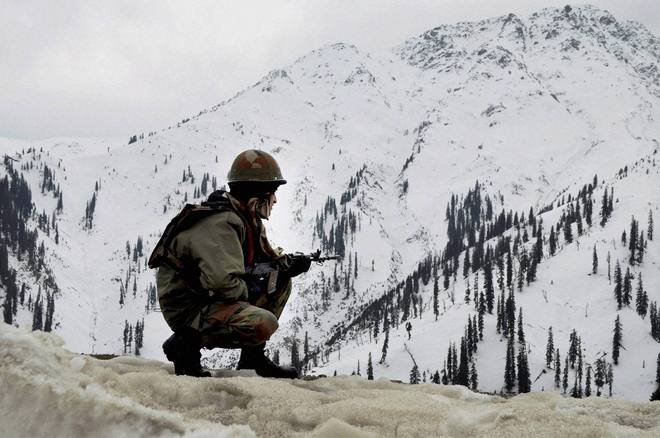
Three militants, who tried to storm an Army base close to the Line of Control (LoC) in Tangdhar sector of Kupwara district, were killed in a six-hour-long gunfight. A civilian working at the camp was also killed while two Army men, including an officer, were injured in the gunfight.
This was the second unsuccessful attempt by militants to storm an Army base in Tangdhar area this year. Srinagar-based defence spokesman Lt Col NN Joshi said a search operation was under way in the area.
Defence sources said a group of heavily armed militants lobbed grenades and opened fire at a 3/1 GR battalion at Kulsuri Ridge in Tangdhar sector, around 135 km from here, around 7 am today. They made an unsuccessful attempt to sneak into the camp.
“The group probably entered from the Sanjoi side of the Pakistan-Occupied Kashmir (POK) last night. The LoC is only 5 km from the encounter site. Initial indications suggest it was a pre-planned attack,” a Defence official said.
“A civilian employee of the Military Engineering Service (MES) contractor and a Junior Commissioner Officer were injured,” sources said. The civilian, identified as 22-year-old Tanweer Ahmed, succumbed to his injuries later. The JCO was taken to the Kupwara military hospital where his condition was stated to be stable.
An oil dump situated there caught fire during the exchange of fire and two vehicles of the Army and a hut were damaged.
The Quick Reaction Team (QRT) of the Army and elite commandos were rushed to the area to take on the militants. A Deputy Commander of 104 Brigade, a Colonel-rank officer, led from the front and had a narrow escape during the gunfight. “A bullet grazed his ear, causing a minor injury. After being treated, he again led the operation,” sources said.
The militants later tried to take shelter in residential houses near the camp. “Three militants were killed during the operation and three assault rifles were seized from their possession,” they said. Combing continued in the area to ensure that no militant was hiding there.
The Jaish-e-Mohammad (JeM) has claimed responsibility for the attack. A caller who identified himself as spokesperson of the outfit Muhammad Hasan Shah told a Srinagar-based news agency that the militants of the group stormed the camp. The militants inflicted heavy damage on the forces, he claimed.
On May 31 this year, four militants were killed after they crossed the LoC and were intercepted by soldiers near Bakhiyan village, close to the Army’s 104 Infantry Brigade headquarters.
Jaish-e-Mohammad claims responsibility
Terror outfit Jaish-e-Mohammad has claimed responsibilityfor the attack
The outfit was founded in January 2000 by Maulana Masood Azhar—one of the three militants released as part of the 1999 Kandahar hijack prisoner swap
It has been involved in several deadly attacks in and outside Kashmir, including the attack on Parliament and the state Legislative Assembly in Srinagar
NEW DELHI: The armed forces want at least five “core anomalies” in their salary structures to be resolved to establish the “correct baseline” for recommendations of the 7th Central Pay Commission (CPC), whose term has now been extended till December 31 by the government.
While the heat and dust over one rank, one pension (OROP) is yet to settle, with a section of veterans rejecting the “diluted” version announced by the government on September 5, the serving personnel have their own deep-seated grouse over their eroding “status, parity and equivalence” as compared to their civilian counterparts.
The armed forces top brass have made several representations to the government, including the defence and finance ministries, on the core anomalies over the last one year. But have received no assurance till now. With the 7th CPC’s term being extended by four months, they are now making a last-ditch attempt to get the anomalies rectified. One of the main demands is the grant of NFU (non-functional upgradation) for officers denied promotions due to the lack of vacancies in the steeply-pyramidal structure of the armed forces. “IFS and IPS officers, as also those from organized Group A civil services, now get NFU after the 6th CPC like IAS officers. But the armed forces have been kept out of it,” said a senior officer.
“This adversely impacts the morale of serving military officers. It also creates command, control and functional problems because even organizations that work closely with the military like DRDO, Border Roads Organisation, Military Engineer Service and the like get NFU,” he added.
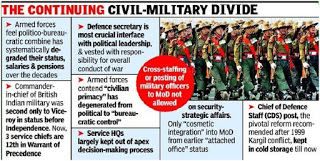
Another demand is the placement of all Lt-Generals in the HAG+ (higher administrative grade) pay-scale like directors-general of police. “As of now, only 33% of Lt-Gens are in the HAG+ scale. The status of all Lt-Gens with that of DGPs must be restored,” he added.
The other anomalies deal with the grant of “uniform grade pay” and proper “initial pay fixation” of Lt-Colonels, Colonels and Brigadiers. There is also the need for all JCOs (junior commissioned officers) and soldiers to get “common pay scales”, in the backdrop of the ones recruited before January 2006 not getting them.
“Successive CPCs have given a raw deal to the armed forces compared to the bureaucracy. Virtually all IAS and IFS officers, for instance, reach the apex pay scale before their retirement due to NFU. They, therefore, get OROP through the backdoor. It’s high time the historical and traditional parity was restored,” said another officer.
The civilian bureaucracy, however, is not impressed. It feels the armed forces keep on making “more and more demands” when they already get a lot of privileges from free rations to hugely-subsidized canteens. “Military officers and jawans already get ‘military service pay’ for their tougher working conditions. The demand for NFU is unrealistic,” said a senior bureaucrat.
With the Seventh Pay Commission submitting its report to the government, it is up to Prime Minister Narendra Modi to decide whether to swim with the recommendations or stick to his promise of “Minimum Government, Maximum Governance” and thereby risk massive discontent. As was the case with the promise of raising minimum support prices for farm produce or bringing back black money, Narendra Modi will find it difficult to meet this commitment as well. And this is just the beginning of copycat demands from state employees, banks, and other government-owned institutions. Many of them, especially most states, are simply in no position to fork out more without cutting down on critically required social services or infrastructure development.
The taxpayers, which means most of the country, and the economy will groan at the commitment. There will also be intense heart-burning in the informal sector and most of the organised sector. Denied medical reimbursement, decent pensions, adequate salary and certainty of service, their pay increases are subject to much stringent criteria. The reality is though government staffers are mollycoddled, a substantial chunk is honest and struggles to meet the demands of a consumerist society. But the pay panel has erred by not providing special packages to doctors and teachers in view of the degeneration in the public health and education systems. Similarly there should have been extra consideration for policemen and judges.
Now that higher pay and pensions for government employees are a fait accompli, some myths ought to be busted. The economy will absorb the impact within the next two years. The arrears will not be as hefty as last time because the implementation date is January 1, 2016. But in future, the Union Cabinet must provide for constant audits of government departments, especially the ones managing public delivery of services. The inputs should be put up for the next Pay Commission’s consideration. The government sector must be answerable to the people. With the size of the government at 139 per lakh citizens as compared to 668 for the US, babus must not be allowed to have their cake and eat it too.
Tribune News Service
Chandigarh, November 18
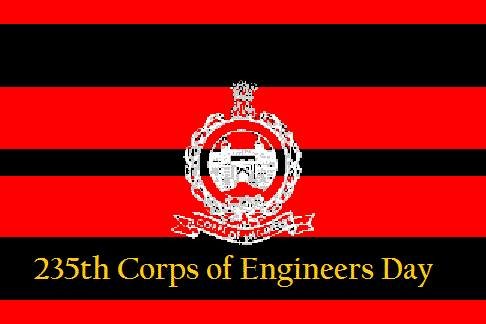
The Corps of Engineers of the Indian Army, also called Sappers, celebrated their 235th Corps Day today.
On this occasion, a solemn wreath-laying ceremony to pay tributes to the martyrs was organised at the Veer Smriti War Memorial in Chandimandir.
A large number of serving and retired Sappers attended the event. A social get-together was also organised in the evening.
The Corps of Engineers is one of the oldest Support Arms of the Army and has four constituents namely Combat Engineers, Military Engineering Services, Border Roads Organisation and Military Survey.
In addition to providing combat engineering support during war and development of infrastructure during peace, the Corps has rendered yeomen service in aid to civil authorities during natural calamities. Their rescue, relief and rehabilitation operations during Kashmir floods and Nepal earthquake further reinforced their versatility and omnipresence.
The Sappers of Western Command have been on the forefront of development of border areas, providing better road connectivity and improved infrastructure for the populace. In the hinterland, they have strived tirelessly to improve the living conditions of the military personnel and beautify the cantonments.
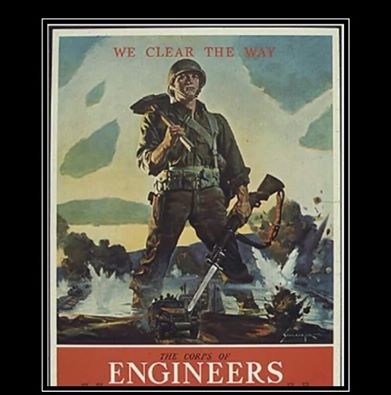
New Delhi, Nov 07: The Narendra Modi government on Saturday, issued the much-awaited notification for the implementation of the ‘One Rank One Pension’ (OROP) scheme for the armed forces personnel. The notification comes after years of protest by ex-servicemen across India.
The Ministry of Defence (MoD) said late on Saturday night that the defence forces of India have a rich history and tradition of bravery and gallantry.
“Defence forces have not only defend our borders with exemplary courage and valour but have also performed with fearless attitude and empathy in natural calamities and other trying circumstances. Government of India recognizes and respects their contribution,” MoD said.
With the notification of OROP, Modi government has fulfilled yet another promise they made in the election manifesto in 2014. The government had earlier the announced modalities of OROP implementation in September this year.
“The delay in issuing the notification was due to the Model Code of Conduct in place owing to Bihar elections,” MoD said.
Judicial Committee to look into anomalies ::
According to the order, personnel who opt to get discharged henceforth on their own request under Rule 13(3)1(i)(b),13(3)1(iv) or Rule 16B of the Army Rule 1954 or equivalent Navy or Air Force Rules will not be entitled to the benefits of OROP. It will be effective prospectively.
The government also has decided to set up a Judicial Committee to look into anomalies, if any, arising out of implementation of OROP. The Judicial Committee will submit its report in six months.
“Detailed instructions along with tables indicating revised pension for each rank and each category, shall be issued separately for updation of pension and payment of arrears directly by Pension Disbursing Agencies,” says MoD.
Salient features of the OROP as per the order ::
* Pension of the past pensioners would be re-fixed on the basis of pension of retirees of calendar year 2013 and the benefit will be effective with effect from 1.7.2014.
* Pension will be re-fixed for all pensioners on the basis of the average of minimum and maximum pension of personnel retiring in 2013 in the same rank and with the same length of service.
* Pension for those drawing above the average shall be protected.
* Arrears will be paid in four equal half yearly installments. However, all the family pensioners, including those in receipt of Special/Liberalized family pensioners, and Gallantry award winners shall be paid arrears in one installment.

























































